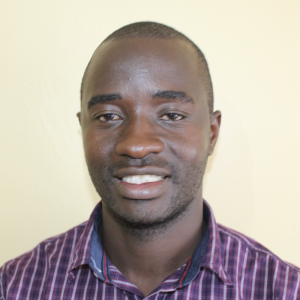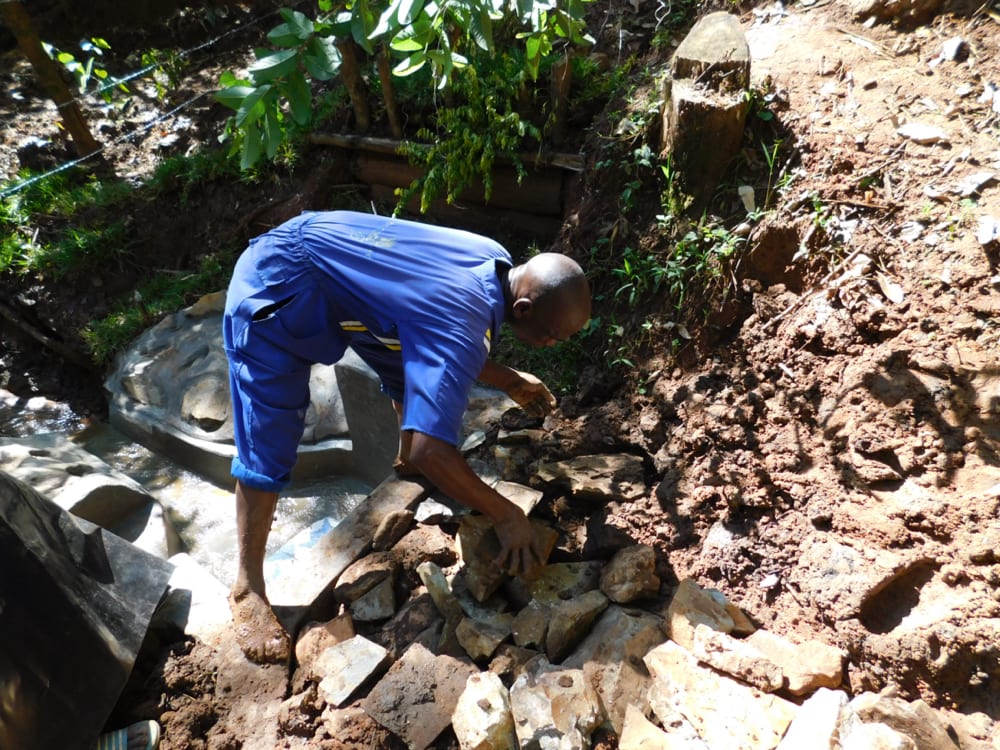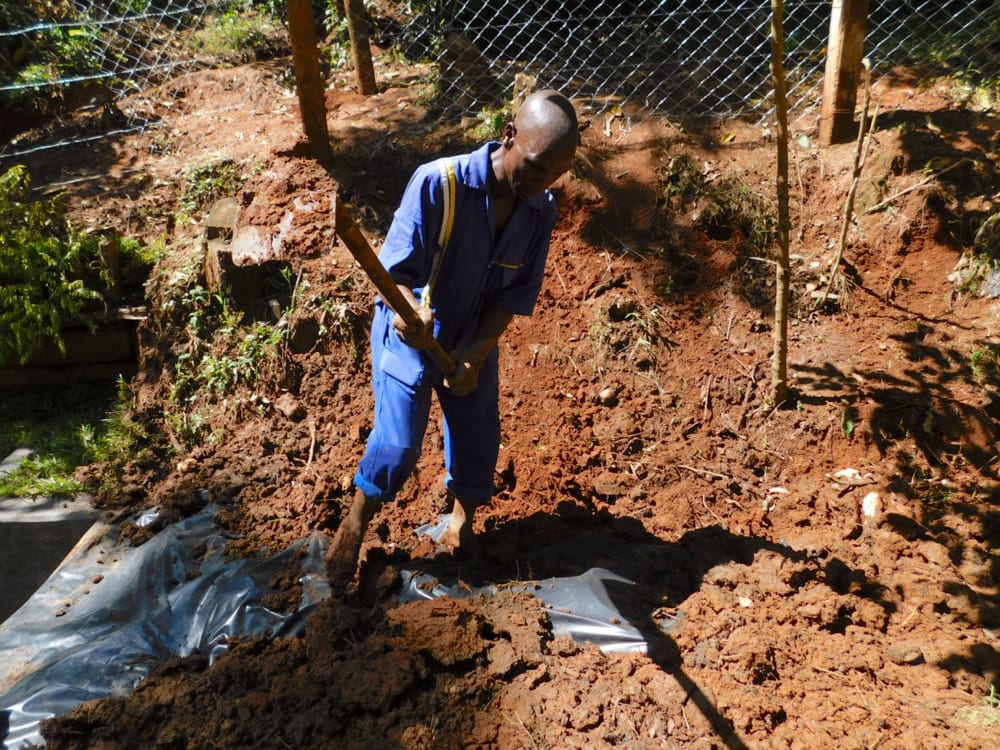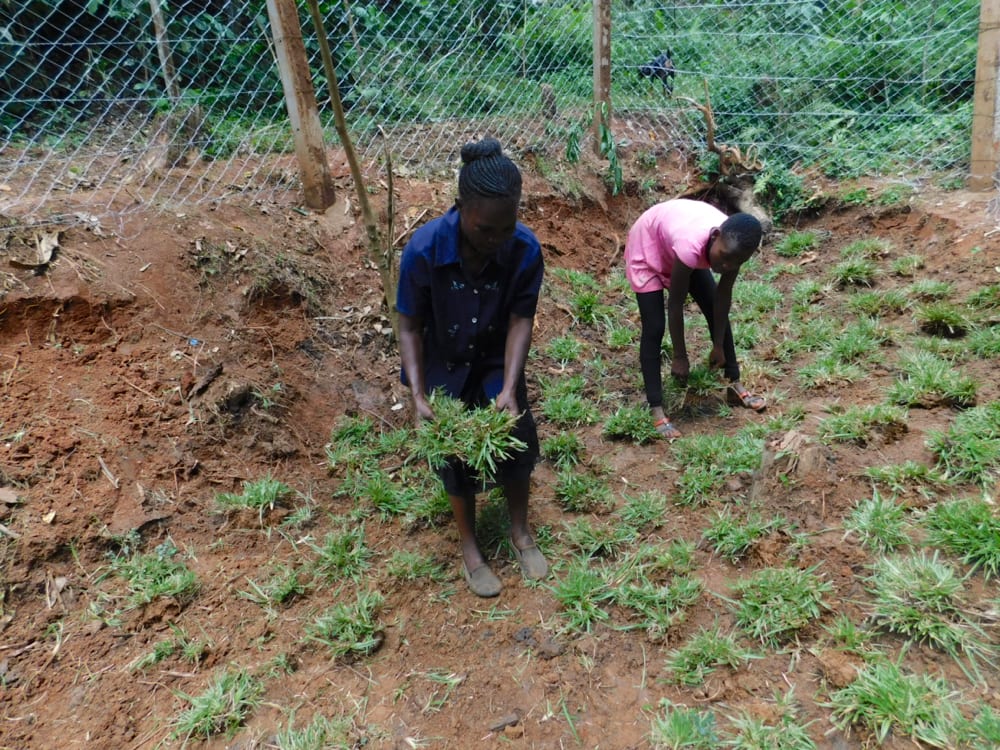The Shamakhokho area is partially forested with a mixture of indigenous and exotic tree species. The topography of the area is generally a gradual slope with some steep parts. The settlements are clustered whereby families stay together in clan setups, though there are also some rental units available which mostly attract non-locals. Shamakhokho Shopping Center is just two kilometers away, adding to the cosmopolitan feel and large population here.
Wizula Spring is the main source of water for 210 people in Shamakhokho. But the spring's water is also in high demand from the schools, hospitals, and churches that surround it. These groups seek out Wizula Spring for its reliability, flowing with water even during one of the most intense droughts on record in 2019. But the added crowds heighten the challenges faced at the spring, which are many.
First, Wizula Spring is open to contamination from both human and environmental pollutants. Stormwater from the rains washes farm chemicals, residues from animal waste, and soil directly into the spring.
"I do regular maintenance at the spring by hoeing out the soil and other debris because of stormwater that washes these contaminants into our water source. This is a tedious exercise that is done on a regular basis since the water point is open and unprotected," explained Syllas Shigali, who works as a brick maker.
Rotting leaves, bugs, and algae are constants where the spring water pools. Animals can easily walk through the spring, too, drinking and defecating in the water.
Community members report frequent cases of sore throat, diarrhea, and stomachache after drinking water from Wizula Spring. These and other water-realted illnesses are expensive to treat, draining families of their financial resources. And when people get sick after drinking the spring water, adults miss out on key productive and income-earning time and children have to stay home from school, falling behind in their lessons.
"We normally get sick after using the water. For me, sore throat problem is my greatest challenge. My friends have also told me that they once suffered diarrhea after drinking the water," said primary school-aged Steve.
Accessibility is the other major problem at Wizula Spring. The area is slick with mud, and to reach the drawing point people must wade through several inches of water and mud. For children, the water sometimes reaches mid-shin or higher, giving parents extra concern for their safety should their youngest children fall and get stuck in the water.
To draw water, the community improvised a discharge area by sticking a metal pipe into a mud wall they built. This forces the spring water to pool behind the wall so that it can only flow out through the pipe. But water constantly seeps through the wall, reducing the discharge speed of the water and slowing community members down as they fill their jerrycans.
This situation reaches a critical stage when the improvised discharge pipe at the spring gets blocked by debris and soil washed down by runoff. Thus, someone has to hoe it up and work out the process of unblocking the pipe in addition to unblocking the spring's pool of water as Syllas described. This process stirs up even more mud in the water, wasting community members' precious time as they wait for the water to settle so they can begin fetching it once more. Having to wait at the spring means delays to the rest of the day's activities, including picking tea, which his a key driver of income and is meant to be done in the morning hours.
The only other year-round water sources this community has are two other spring we protected in the area called Wamunala Spring and Gideon Asonga Spring. But these two springs are further away from the 210 people who would prefer to use Wizula Spring, eating up more of their time if they choose to take the longer walk.
And with more than 600 people who call this area home, the previously protected springs are quickly overburdened by the extra people who come to collect water.
Protecting Wizula Spring will help reduce the stress on the families relying on the other two springs, and it will make a new source of clean water available closer to home for the people who rely on Wizula Spring.
What We Can Do:
Spring Protection
Protecting the spring will help provide access to cleaner and safer water and reduce the time people have to spend to fetch it. Construction will keep surface runoff and other contaminants out of the water. With the community’s high involvement in the process, there should be a good sense of responsibility and ownership for the new clean water source.
Fetching water is a task predominantly carried out by women and young girls. Protecting the spring and offering training and support will, therefore, help empower the female members of the community by freeing up more of their time and energy to engage and invest in income-generating activities and their education.
Training on Health, Hygiene, COVID-19, and More
To hold trainings during the pandemic, we work closely with both community leaders and the local government to approve small groups to attend training. We ask community leaders to invite a select yet representative group of people to attend training who will then act as ambassadors to the rest of the community to share what they learn. We also communicate our expectations of physical distancing and wearing masks for all who choose to attend.
The training will focus on improved hygiene, health, and sanitation habits in this community. We will also have a dedicated session on COVID-19 symptoms, transmission routes, and prevention best practices.
With the community’s input, we will identify key leverage points where they can alter their practices at the personal, household, and community levels to affect change. This training will help to ensure participants have the knowledge they need about healthy practices and their importance to make the most of their water point as soon as water is flowing.
Our team of facilitators will use a variety of methods to train community members. Some of these methods include participatory hygiene and sanitation transformation, asset-based community development, group discussions, handouts, and demonstrations at the spring.
One of the most important issues we plan to cover is the handling, storage, and treatment of water. Having a clean water source will be extremely helpful, but it is useless if water gets contaminated by the time it is consumed. We and the community strongly believe that all of these components will work together to improve living standards here, which will help to unlock the potential for these community members to live better, healthier lives.
We will then conduct a small series of follow-up trainings before transitioning to our regularly scheduled support visits throughout the year.
Training will result in the formation of a water user committee, elected by their peers, that will oversee the operations and maintenance of the spring. The committee will enforce proper behavior around the spring and delegate tasks that will help preserve the site, such as building a fence and digging proper drainage channels. The fence will keep out destructive animals and unwanted waste, and the drainage will keep the area’s mosquito population at a minimum.



 Rehabilitation Project
Rehabilitation Project














































